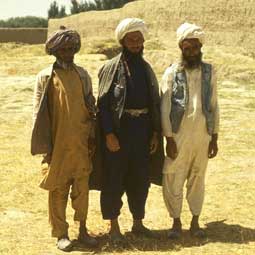
Periods : Afghanistan
Coins of Afghan Afghani
Traditional Afghanistan coins shared much similarity with its neighbors like Iran and India. There were four major mints: Kabul, Kandahar, Balkh and Herat. Afghanistan old coins belong to the Durranis. On gold and silver Afghanistan coins, the inscriptions in Persian (called Dari in Afghanistan) included the name of the mint city and ruler, but some issues are anonymous.
In 1891 Abdur Rahman had a modern mint set up in Kabul using British minting machinery. The old afghan coins were replaced with a new system which had 60 paisa equals to 1 rupee. In 1901 the name Afghanistan appeared on Afghan coins for the first time. A decimal system, 100 puls to 1 Afghani was introduced in 1925. The national symbol on most afghan afghani coins is a stylized mosque within which is seen the mihrab, a niche indicating the direction of Mecca, and the minbar, the pulpit, with a flight of steps leading up to it. Inscriptions in Pashtu were first used under Habibullah, but did not become standard until 1950. Until 1919, Afghanistan coins were dated by the lunar Islamic Hejira calendar (AH), often with the kings regnal year as a second date.
Ancient Afghanistan coins, especially copper were not regulated by the central authorities. Mint masters produced many types of hand-struck coinage including the use of old afghan coins as blanks. Consequently, weights are quite random and there are no denominations in the true sense of the term. All were known as falus or paisas, and lots of mixed sizes were accounted by weight. Afghan afghani was regulated in the contemporary period.
Detailed information on Afghanistan coins available for free only on Mintage World.
